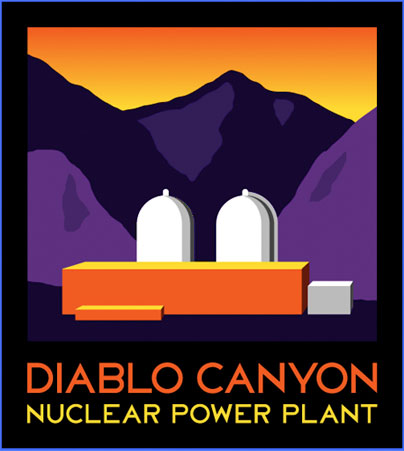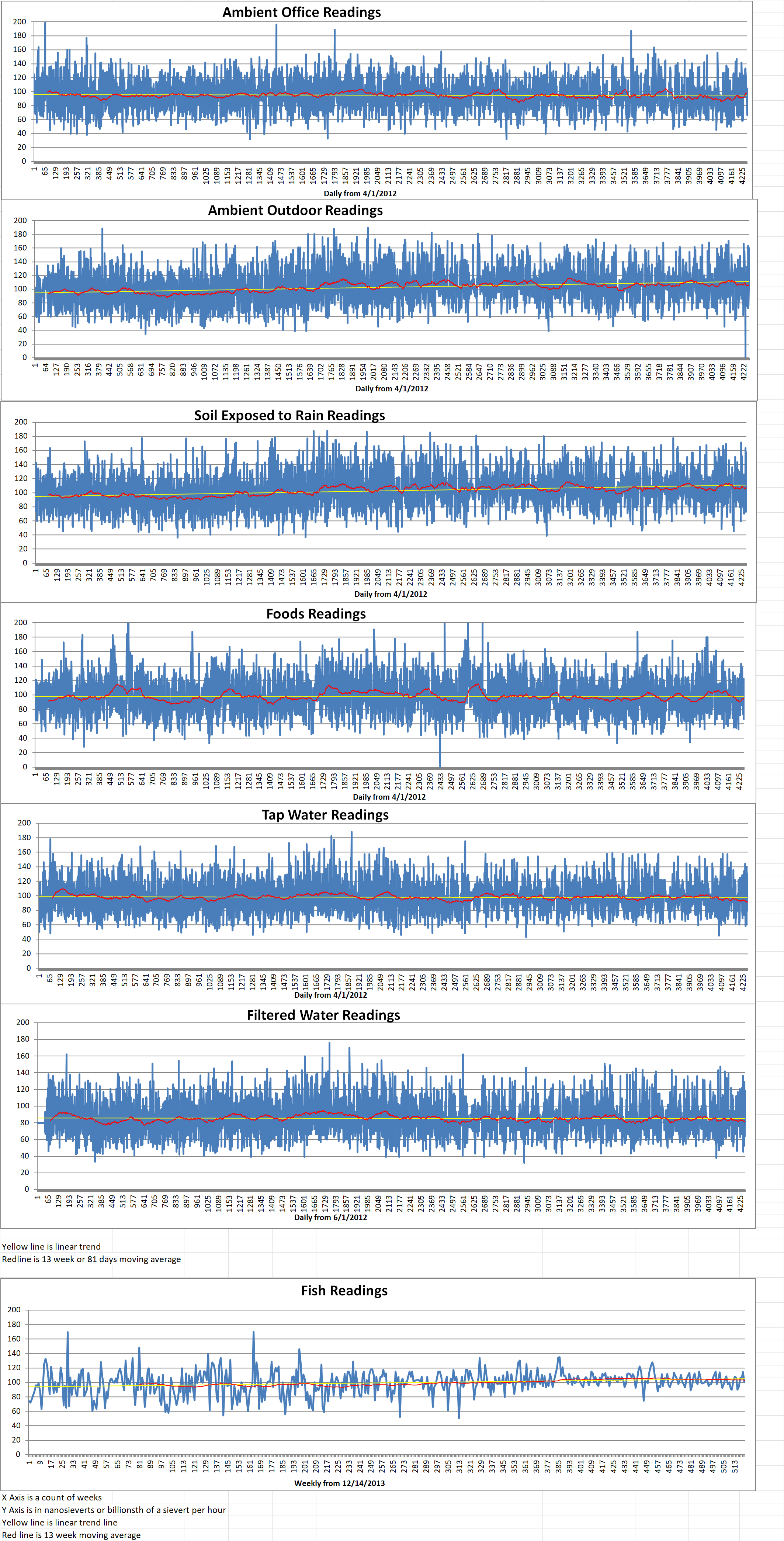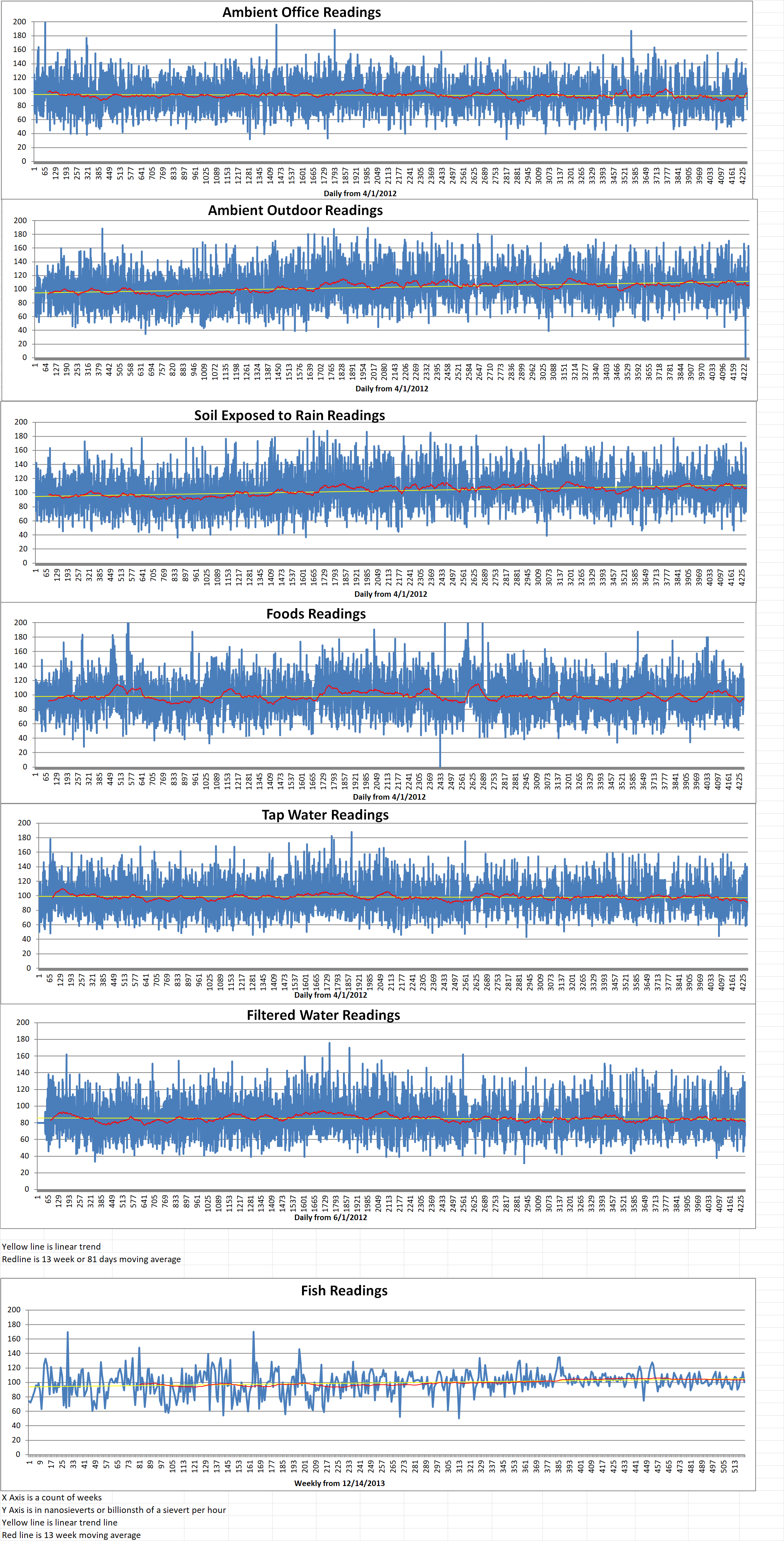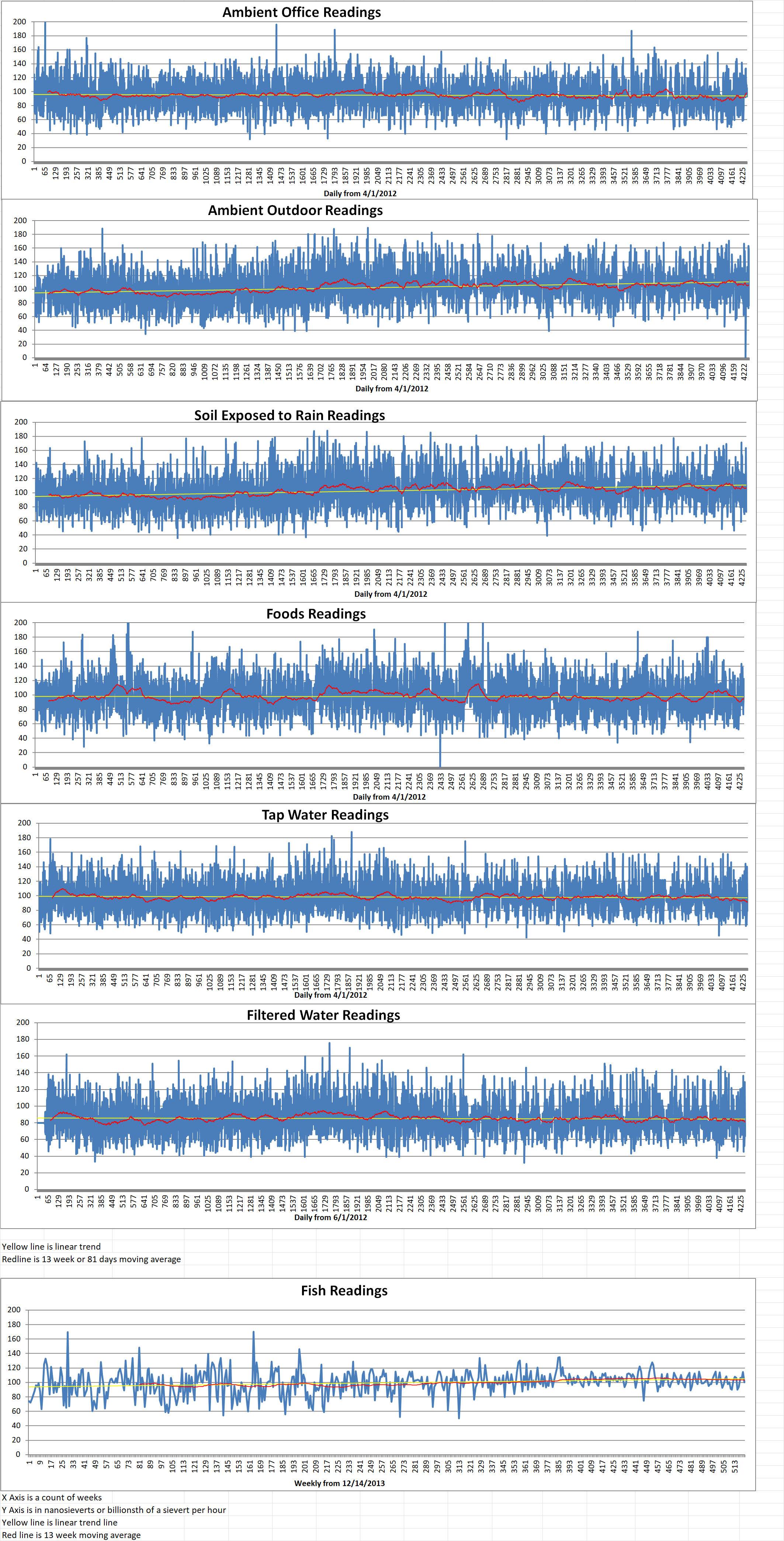Part 2 of 2 Parts (Please read Part 1 first)
If the state decides to extend its current five-year PG&E extension approval through 2030, the federal approval will already be in place.
Those opposed to license extension are also proceeding with their attempts to get the plant to shut down as scheduled.
Three climate activist groups filed a motion for the immediate closure of Diablo in March of 2024. They said that the nuclear plant poses an “unacceptable safety risk.”
San Luis Obispo Mothers for Peace, Environmental Working Group, and Friends of the Earth also requested a hearing with the NRC to force the agency to consider the groups’ safety concerns.
The groups say the location of the Diablo Canyon plant near earthquake faults makes it susceptible to an earthquake that could cause a catastrophic nuclear meltdown.
Zawalick countered, “So, Diablo Canyon is the most studied region, from a seismic standpoint of any nuclear plant in the United States and possibly the world, as a condition of our original license to operate these plants and it will continue into extended operations.”
However, the environmental groups’ court filing also says keeping the plant open “hurts the state’s shift to safe, renewable energy and prolongs the risk of disaster at the plant.”
Jane Swanson is one of the original members of Mothers for Peace. She said, “It inputs 24/7. You can’t ramp up and down a nuclear power plant on the basis of need because it’s too dangerous. That’s how things get out of control. And so, as long as it’s inputting this into the western grid, you can’t add more renewables, so it’s counterintuitive but this big source of electricity is blocking the addition of some renewables.”
Even with CPUC approval and NRC application review, there are several more agencies which have yet to weigh in. They could derail the license extension process. The agencies include the California Coastal Commission, the California State Lands Commission, the California Energy Commission, and the California Air Resources Board.
Currently, PG&E is moving forward on two different tracks. It is planning for continued operation (the plant’s Unit 2 reactor is currently being refueled) and planning for the plant’s eventual decommissioning.
Zawalick said, “The state has a few more to do. So now, I just say that we continue to, like every nuclear plant is, planning for decommissioning no matter where you are on the timeline.
Whether it is five, ten or twenty years from now, the Diablo Canyon plant will eventually need to be shut down. On Wednesday, May 22, the Diablo Canyon Decommissioning Engagement Panel hosted an in-person and virtual meeting from 6-9 p.m. at the Atascadero City Hall. The purpose of the meeting was to discuss how the seven-hundred-and-fifty-acre site on which Diablo Canyon Power Plant is located could be repurposed in the future.
Also on Wednesday, the NRC’s Atomic Safety and Licensing Board heard oral arguments on the petition from Mothers for Peace, the Environmental Working Group, and Friends of the Earth. The hearing will be held at NRC headquarters in Rockville, Maryland.
Blog
-

Nuclear Reactors 1397 – Pacific Gas & Electric Is Working On Restarting Diablo Canyon Nuclear Power Plant – Part 2 of 2 Parts
-
Nuclear News Roundup May 24, 2024
Russia’s Medvedev says Moscow’s nuclear threats over Ukraine are no bluff reuters.com
UK Urges UN Action Against North Korea’s Nuclear Program miragenews.com
Kremlin official threatens war against NATO if Ukraine uses US weapons against Russia news.sky.com
Call for next government to make ‘big decisions’ on nuclear power projects uk.news.yahoo.com
-

Geiger Readings for May 24, 2024
Ambient office = 66 nanosieverts per hour
Ambient outside = 160 nanosieverts per hour
Soil exposed to rain water = 157 nanosieverts per hour
Tomato from Central Market = 66 nanosieverts per hour
Tap water = 130 nanosieverts per hour
Filter water = 119 nanosieverts per hour
-

Nuclear Reactors 1396 – Pacific Gas & Electric Is Working On Restarting Diablo Canyon Nuclear Power Plant – Part 1 of 2 Parts
Part 1 of 2 Parts
Nuclear power has had a renaissance within the last decade. With more focus on combatting climate change, there has been an increased interest in all types of energy, even if it’s not renewable.
U.S. President Joe Biden set a goal to decarbonize the power grid by 2035. His administration sees nuclear power as a critical component of that. In California, there is a bigger thirst for power combined with increasing drought reducing the amount of hydroelectric power. As a result, nuclear energy began to get the attention of Governor Gavin Newsom as well.
In 2022, Newsom worked with state lawmakers to get California Senate Bill 846 passed. It agreed to lend Pacific Gas & Electric (PG&E) one billion four hundred million dollars and help with the process if PG&E would agree to change course and request a license renewal for the Diablo Canyon Power Plant.
Maureen Zawalick is the Vice President of Business and Technical Services at Diablo Canyon Power Plant. She said, “So we were affectionately known as Team Pivot. No other nuclear plant done this, and because we’d been operating so safely, continuing to invest in the plant for reliability and so forth, it wasn’t too difficult of a pivot.”
With approvals from multiple regulatory bodies and agencies hanging in the balance, time is running out. In less than two years, the decommissioning process is set to begin. The first step is an approval was the California Public Utilities Commission.
Zawalick explained, “So they just approved us to go to 2029 and 2030, and that’s, you know, our funding source through that mechanism. The California State Lands Commission, the permits, they’re now extended to 2029 to 2030. Any permits we need from the California Coastal Commission? We’ll navigate through that.”
She continued, “The approval came with some conditions. The Nuclear Regulatory Commission (NRC) must continue to authorize the plant to operate, the utility must secure and maintain a $1.1 billion federal loan (which was approved by the Biden Administration), and the Public Utilities Commission cannot make a future determination that extended plant operations ‘are imprudent or unreasonable’.”
With regard to the NRC, if a nuclear power plant applies for licensure within a “reasonable” time and the license application is deemed complete, the plant can continue to operate during application review even if the current license has expired.
The NRC accepted PG&E’s application to restart the plant in December of 2023. This will allow the plant to continue generating electricity past its current license expiration later this year for Unit 1 and next year for Unit 2. The PG&E application asked for a 20-year extension.
Zawalick said, “The NRC process and their regulation looks at it from a 20-year time frame, from an environmental standpoint and from aging management and from a safety perspective. Okay, so there’s a tremendous benefit of asking for 20 years with the Nuclear Regulatory Commission per their process, because it gives maximum optionality for the state.”
Please read Part 2 next -

Geiger Readings for May 23, 2024
Ambient office = 74 nanosieverts per hour
Ambient outside = 126 nanosieverts per hour
Soil exposed to rain water = 125 nanosieverts per hour
Red bell pepper from Central Market = 93 nanosieverts per hour
Tap water = 86 nanosieverts per hour
Filter water = 80 nanosieverts per hour
-
Nuclear News Roundup May 23, 2024
White House holds summit on US nuclear energy deployment world-nuclear-news.org
KAERI and Seaborg sign MoU on cooperation world-nuclear-news.org
Toshiba teams up with local firms for Polish plant world-nuclear-news.org
Takahama units cleared for extended operation world-nuclear-news.org
-

Nuclear Reactors 1395 – EPFL Working On Using Gamma Rays To Monitor Operating Nuclear Reactors
Scientists at the Swiss Federal Institute of Technology in Lausanne (EPFL) have devised and tested a new, gamma-noise method for monitoring nuclear reactors non-invasively and from a distance. The new method was tested on EPFL’s CROCUS nuclear reactor. It can improve nuclear safety and treaty compliance.
Monitoring nuclear reactors around the world to ensure that they are in compliance with regulations in international treaties is essential for safety. However, while current monitoring methods are effective, they often involve invasive procedures that can disrupt reactor operations or pose security risks.
Nuclear technology is constantly evolving, creating new challenges for nuclear monitoring. Small modular reactors (SMRs) are compact and often installed in remote locations. Conventional monitoring methods are primarily designed for larger facilities and may not be sufficiently adaptable or sensitive to the workings of SMRs.
A team of researchers at EPFL and the Paul Scherrer Institut (PSI) have pioneered a non-invasive and more efficient technique using gamma noise to monitor reactors.
They just published a paper in Scientific Reports. In this report, they show that gamma radiation, as opposed to the neutron signals used by traditional monitoring methods, can provide accurate and timely data on reactor criticality and composition without actual, physical intrusion into the reactor vessel.
The study was led by Oskari Pakari. He is a scientist with EPFL’s Laboratory for Reactor Physics and Systems Behavior and Professor Andreas Pautz with the PSI’s Nuclear Energy and Safety Research Division.
In their new monitoring method, the researchers used two bismuth germanate scintillators. These were strategically positioned outside EPFL’s CROCUS research nuclear reactor. This allowed them to non-invasively monitor gamma radiation emitted from its operation.
Gamma radiation is one of the types of electromagnetic radiation produced during nuclear reactions. Gamma rays carry information about the reactor’s state, such as changes in criticality and composition of its fuel (e.g., uranium) without directly interfering with the reactor’s operations.
The new method also utilizes statistical analysis of the variability of gamma ray detection over time. Unlike conventional methods, which rely heavily on neutrons, gamma noise analysis focuses on the fluctuations in gamma ray counts. These correlate to the fission chain reactions occurring inside the reactor. The degree of correlation provides insights into the reactor’s operational state.
The new method can provide essential data within minutes. This is a significant improvement over traditional methods, which typically require longer measurement times and closer proximity to the reactor core. The gamma-radiation method uses computational tools to analyze the temporal and spatial variance of detected gamma rays, which allows for rapid and accurate assessments of the reactor’s condition.
The researchers tested their method by extended experiments, successfully demonstrating its efficacy at distances up to several yards from the reactor core. The gamma-radiation monitoring detected prompt decay constants with minimal error. This reduced the need for direct contact with the reactor core and it also enhanced the speed and accuracy of data acquisition.
The new method provides reliable, non-invasive monitoring of a variety of nuclear reactor types, including SMRs. It could change nuclear safety protocols, facilitate better compliance with international treaties, and possibly be applied to other fields requiring radiation monitoring without direct sensor contact. -
Nuclear News Roundup May 22, 2024
What is the progress of nuclear power in Indiana? Indianapublicmedia.org
AWS granted 1,600-acre rezoning request, plans 15-building campus at Pennsylvania nuclear site datacenterdynamics.com
Biden is expanding energy tax credits for wind and solar to include nuclear qz.com
U.S. concerned about Ukraine strikes on Russian nuclear radar stations Washingtonpost.com
-

Geiger Readings for May 22, 2024
Ambient office = 105 nanosieverts per hour
Ambient outside = 108 nanosieverts per hour
Soil exposed to rain water = 110 nanosieverts per hour
Purple onion from Central Market = 122 nanosieverts per hour
Mini cucumber Tap water = 91 nanosieverts per hour
Filter water = 77 nanosieverts per hour
-

Nuclear Fusion 70 – Mitsubishi Heavy Industry Is Delivering Components To The ITER Project.
Mitsubishi Heavy Industries (MHI) has been awarded a contract to provide an additional twelve outer vertical targets for the divertor to be used in the International Thermonuclear Experimental Reactor (ITER). MHI has already delivered six of the components.
The value of the contract was not disclosed. It was awarded by Japan’s National Institutes for Quantum Science and Technology (QST). It follows the initial production order for the manufacture of six units (Unit 1 – Unit 6) received in 2021.
With the additional twelve units (Unit 7 – Unit 18), MHI will manufacture eighteen of the total fifty-four outer vertical targets. MHI said production of these units will be completed successively. Delivery to QST expected to begin in 2026.
The divertor is one of the core components of the fusion reactor in the tokamak. It removes the helium residue in the core plasma produced by the fusion reaction, unburned fuel and other impurities. It also removes high heat load and particle loading, which are necessary for stable confinement of the plasma. The divertor contains four parts: the outer vertical target is being procured by Japan, the cassette body and inner vertical target are being manufactured in the EU, and the dome being constructed in Russia.
The heat load on the divertor reaches a maximum of twenty-four megawatts of thermal energy per square yard. The outer vertical directly faces the plasma due to its structure. It is used in an extreme environment where it is exposed to the heat load and high energy particle loading from the plasma, and its structure has an extremely complex shape requiring high-precision fabrication and processing technology.
MHI has previously received orders for production for five (of a total of nineteen) toroidal field coils, another core component of ITER, all of which were shipped by 2023.
In mid-2022, the MHI delivered equipment for confirming and demonstrating the safety of the ‘blanket’ of the ITER. The blanket is one of the components that is a part of the inner wall of the fusion reactor. The testing equipment provided by MHI comprised four systems: the High Heat Flux Test Equipment, the In Box Water Eruption Test Equipment, the Be-Water Reaction Test Equipment, and the Flow Assisted Corrosion Test Loop.
MHI said that, “Going forward, MHI will continue its efforts for manufacturing of major components such as the divertor and equatorial launcher. In addition, MHI will actively support the design and development of the fusion prototype reactor which is planned to be constructed following the ITER project, contributing to the realization of fusion energy.”
ITER is a huge international project to build a tokamak fusion device in Cadarache, France, designed to prove the feasibility of fusion as a large-scale and carbon-free source of energy. The goal of ITER is to operate at five hundred megawatts (for at least four hundred seconds continuously) with fifty megawatts of plasma heating power input. It is possible that an additional three hundred megawatts of electricity input may be required in operation. No electricity will be produced by ITER.
Thirty-five nations are collaborating to build ITER. The European Union is contributing almost half of the cost of its construction, while the other six members (China, India, Japan, South Korea, Russia and the USA) are contributing equally to the rest of the cost. Construction of ITER began in 2010 and the original 2018 first plasma target date was put back to 2025 by the ITER council in 2016, but is currently in the process of being revised again.
